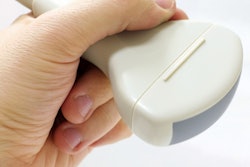Monday, November 26 | 3:10 p.m.-3:20 p.m. | SSE07-02 | Room S402AB
In this Monday afternoon session, researchers will discuss how a new ultrasound measure called the venous pulsatility index performs comparably to clinical and lab-based scoring systems for diagnosing high-risk nonalcoholic steatohepatitis.Presenter Dr. Masoud Baikpour from Massachusetts General Hospital in Boston will share results from a study that included 123 patients with nonalcoholic fatty liver disease (NAFLD). All patients had undergone duplex Doppler ultrasound assessment of the main portal vein between January 2014 and February 2018, either within a year before or after liver biopsy.
Baikpour's group reviewed the ultrasound images and used the spectral waveform to measure the blood velocity maximum (Vmax) and minimum (Vmin) in the portal vein to calculate the venous pulsatility index (Vmax-Vmin/Vmax).
The researchers then measured the area under the receiver operating characteristic curve (AUC) to assess the value of the venous pulsatility index (VPI) for diagnosing high-risk nonalcoholic steatohepatitis, comparing VPI results with four common clinical scoring systems and evaluating how adding it to these scoring systems affected their diagnostic performance.
They found that 33 of the 123 patients had high-risk nonalcoholic steatohepatitis. The AUC of the venous pulsatility index for diagnosing high-risk nonalcoholic steatohepatitis was higher than the four scoring systems, at 0.84; adding it significantly improved the diagnostic value of the scoring systems.
"VPI analysis may be useful for high-risk nonalcoholic steatohepatitis diagnosis, which is important for liver-specific mortality NAFLD risk assessment," the group concluded.




















